S'pore walking tours evoke ghosts, history, and urban legends
These tours capitalise on the eerie allure of dark tourism.
Everyone had to leave by 6pm. A thoughtful nod to work-life balance? Or was it to conceal something spookier when this rule was enforced at 35 Hendon Road?
The two restored colonial bungalows, which were the training campus for a large European bank, were a stone's throw from the old, disused Changi Hospital. Closed since 1997, it had gained the reputation of being the most haunted place in Singapore.
One evening, a member of the staff lingered slightly past 6pm, freshening up in the bathroom for a dinner date. She heard a toilet flush and out of the corner of her eye saw the reflection of a colleague in the mirror, stepping out of a cubicle and moving towards the washbasin.
"Oh, you are still here. I thought you had already left," she said, making casual conversation.
After a while, she felt something was not right; her colleague was not responding. When she turned around, the toilet was empty.
But when she looked into the mirror again, the reflection of her colleague remained - smiling at her.
Deeply shaken, the staff member reported the incident to the head office. Whether it was such unsettling hauntings or the impact of the Covid-19 pandemic, the bank ultimately chose not to renew the lease and the bungalows have been vacant ever since.
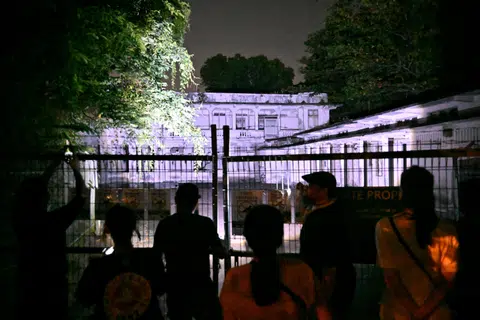
The story was told during a 2024 session of Walk with Hantu: Changi, a walking tour organised by Supernatural Confessions that weaves together the history, heritage and urban legends from Singapore's easternmost edge.
The six of us participating couldn't help feeling goosebumps, even though we knew the story was most likely apocryphal.
It was, after all, just a week before the lunar seventh month. That is the time when, according to Chinese belief, the gates of hell open, allowing spirits to roam the earth. The tour was led by Mr Eugene Tay, founder of Supernatural Confessions and Singapore's only licensed tour guide specialising in dark tourism.
Dark tourism refers to visiting sites linked to death, disaster or tragedy. Coined in 1996 by professors J. John Lennon and Malcolm Foley of Glasgow Caledonian University, its roots can be traced back to 16th century London, when crowds gathered to watch the macabre spectacle of public hangings.
It is a niche market that has experienced rapid growth in recent years. According to Travel and Tour World, a business-to-business media platform, the global dark tourism market is expected to expand from US$32.69 billion (S$41.83 billion) in 2025 to more than US$39.38 billion by 2032.
What is it that draws people to the Auschwitz concentration camp in Poland, the Chernobyl nuclear disaster site in Ukraine and the 9/11 Memorial in New York City?
Experts attribute it to heightened curiosity and the desire to remember historical events, efforts to preserve places where human tragedy or wrongdoing took place and a growing demand for immersive experiences.
In Singapore, equivalent locations include Fort Canning, the Kranji War Memorial and Changi Chapel and Museum.
Dark tourism in Singapore
Many local dark tours are organised by travel agencies or walking tour groups or in collaboration with museums and heritage institutions.
Organisers say participants generally prefer tours that delve into superstition and creepy ghost stories, rather than those which focus on historical fact. As a result, tours are often a mix of fact and folklore, melded seamlessly.
For instance, travel company Journeys Heritage Tours runs Journeys to Hell with Haw Par Villa's Hell's Museum. The tour offers insights into the history of the Aw family, who built the park, alongside an exploration of afterlife beliefs across various cultures and civilisations.
And there is Hey Lad Tour, which partners with Chinese temples in MacPherson to guide participants through the rich histories of these centuries-old places of worship and include opportunities to observe or engage in consultations with a Chinese medium.
Prices of these small group tours typically range from $40 to $90 for a two- to three-hour experience. Tours can also be customised for private groups.
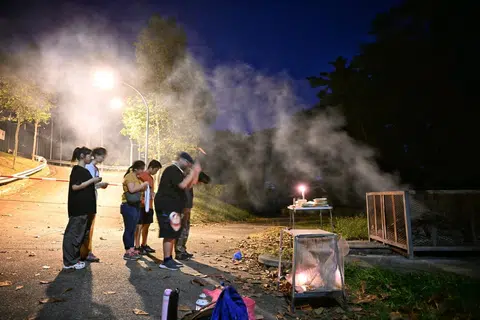
People are captivated by this world, where fact merges with fiction, said Mr Jonathan Lim, the late local theatre veteran and co-guide of Walk with Hantu: Changi, who died in January 2025.
Supernatural Confessions also hosts a Twilight Walk in Changi, which emphasises local history and heritage, but it has never drawn as much interest.
Mr Lim believed only a fraction of Singaporeans would visit Changi purely to learn about its history, but nearly everyone is intrigued by paranormal stories.
He told The Straits Times in an interview after the tour: "We are not scaremongers. We don't just make you shiver and move on… Ghosts add flavours and history provides substance. This is what we are trying to do now - telling both the history and the things that appeal to people's imagination. History has little currency without mystery attached to it."
Mr Lim said dark tourism sits exactly on that fine line where there is something to be afraid of, but one enjoys that feeling, "like riding a roller coaster".
In 2020, Dr Manisha Agarwal of James Cook University Singapore published one of the region's first research papers on the emerging phenomenon of dark tourism, exploring the reasons behind its growing appeal.
Surveying 266 participants across South-east Asia - 41 per cent of them aged between 21 and 25 - Dr Agarwal and her research team identified experience, history and education as the top drivers behind dark tourism. People who seek a deeper connection to the past are drawn to authentic stories about how people survived or perished during crises.
Mr Chris Chia, 30, a fitness trainer and Walk with Hantu: Changi participant, said he liked how the experience wove together stories of different cultures and religious practices, feeding his curiosity about Changi while deepening his connection to the area.
"Such activities should break into the mainstream. I wish for more people to experience them and most importantly, remember them," Mr Chia said.
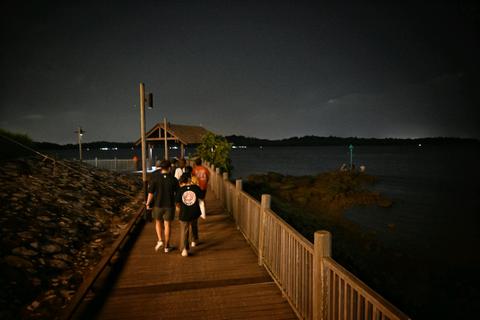
Sometimes, the spooky stories can do more than just spice up a tour.
If I had not attended the tour and heard the ghost story about 35 Hendon Road, I would never have bothered to read up on the area, which was once the headquarters of the British Royal Engineers and the Far East Air Forces.
Under Japanese rule during World War II, many of those who worked here became prisoners of war (POWs). They were instructed to build a runway that was later integrated into the Royal Air Force Changi base after the war.
This development was allegedly one of the reasons Changi was selected as Singapore's main civil airport, replacing Paya Lebar Airport in the 1970s.
Aside from taking participants from site to site and using digital media to make stories come to life, some tours enhance the experience with hands-on activities.
The Spooky Tours at Dempsey Hill by Jane's Singapore Tours, for instance, invited a spiritual teacher and psychic medium, Ms Danielle Van de Velde, on a tour in August 2024.
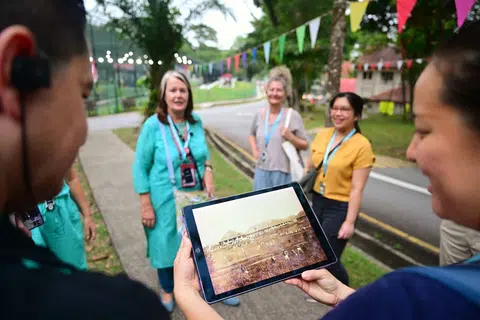
On a secluded, grassy slope at the edge of a carpark, far from all the Dempsey hustle and bustle, Ms Van de Velde introduced the tour group to dowsing rods and pendulums, tools she described as ways to connect with an area's "energy".
According to her, energy accumulates over time in places steeped in history or emotion, such as hospitals and battlegrounds, which can leave behind an imprint, like a radio still playing after a room is empty.
She taught participants how to ask questions of their dowsing rods - L-shaped instruments that would cross in response to some questions - and pendulums.
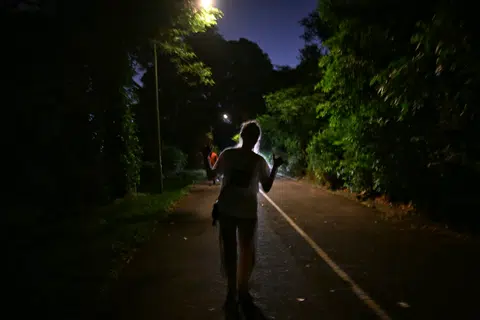
Again, the tour visited a less-known chapter of Singapore's history I might never have explored on my own - The Singapore Mutiny, which took place in 1915.
It was an uprising by soldiers of the 5th Light Infantry, comprising mostly Muslim sepoys, who believed a rumour that they would be sent to fight other Islamic followers in the Ottoman Empire.
Fuelled by discontent and growing anti-colonial sentiment, they decided to revolt and seize parts of Singapore, including Dempsey Hill - then Tanglin Barracks - where much of the violence unfolded. The incident left 18 military personnel and 14 civilians dead.
The British eventually quelled the mutiny after several days of fierce fighting, with assistance from French, Russian and Japanese forces. In the aftermath, all 47 mutineers were publicly executed, making it one of the most severe military actions in British colonial history.
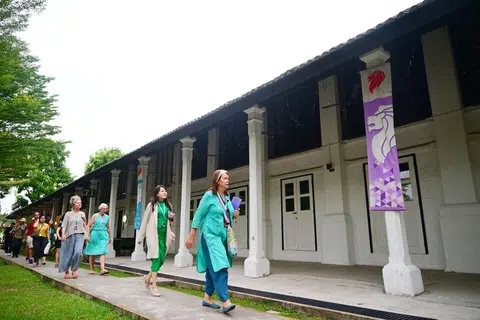
Virtual dark tourism
Not everyone interested in dark tourism is brave enough to visit these so-called "haunted" sites in person. As Dr Agarwal noted in her research study, fear, more so than taboos and religious beliefs, is often the biggest deterrent.
Recognising the gap, some content creators have stepped in to offer thrills from a safe distance, bringing eerie places to audiences through YouTube videos or social media reels.
Some online content is styled like a paranormal investigation, using handheld cameras to explore historic or tragic sites. Many clips offer direct-to-camera narration, while others use tools such as electromagnetic field (EMF) readers that they claim can capture environmental anomalies.
In November 2023, YouTuber Sneaky Sushii posted a video of himself visiting the Housing Board unit in Toa Payoh where one of Singapore's most bizarre and gruesome murders took place in 1981.
Two young children were kidnapped and murdered by charlatan medium Adrian Lim, whose wife and mistress lured the children to the flat. Lim later claimed he had committed the killings to take revenge on the police, who were investigating him for a separate rape case.
Although Sneaky Sushii engaged in questionable actions like calling out to the murderer's spirit and filming the flat's interior without permission, the video has garnered more than a million views.
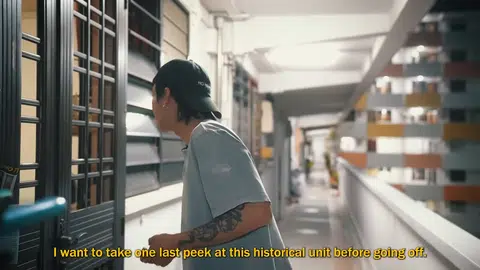
YouTube channel Hellbank Asia has also explored dark locations such as the Bukit Timah railway track in Upper Bukit Timah Road, where two polytechnic students were tragically struck by a train in 2009 and the former Aloha Changi chalet, where two women were found dead in 2012.
In one episode at MacRitchie Reservoir, hosts Joey Pink, Jazliyana Lee and Maguire Jian dedicated a substantial portion of the video discussing the site's history before Ms Pink volunteered to walk around the area alone, armed with an EMF reader.
The hosts highlighted several landmarks around the reservoir, including the ruins of Syonan Jinja - a Shinto shrine built by the Japanese during World War II to commemorate fallen soldiers - and the tomb of war hero Lim Bo Seng, a key figure in the anti-Japanese resistance.
The episode also touched on a high-profile 2005 murder case involving two domestic helpers, in which one killed the other and disposed of the dismembered remains at both Orchard Road and MacRitchie Reservoir.
Mr Wong Zhen Hai, co-founder of Hellbank Asia, said Singapore's spotless, orderly image might be exactly why its darker history holds such fascination for people.
He said audiences are open to sharing their own experiences of locations in the comments section, turning curiosity into community and adding to the shared sense of intrigue.
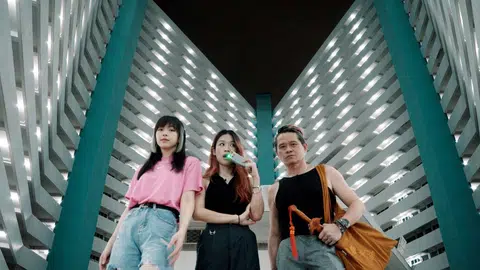
Meanwhile, TikTok channel After Midnight SG has taken its followers to various abandoned places across Singapore, including the former Hainan village inside Thomson Nature Park, and even out of the country, to Johor Bahru, to visit one of its former prisons.
Co-founder and director-editor Muhammed Ruzaimi said even before the existence of short-form video platforms, the team - friends since secondary school - were already drawn to these forgotten and sometimes dark histories.
They wanted to document their late night adventures in short videos, which began to strike a chord with viewers. Mr Ruzaimi said his team hoped their content would help to preserve these sites digitally before they fade into oblivion.
The controversy
Dark tourism often raises ethical red flags, especially when visitors snap insensitive photos, treat tragedy sites like theme parks, or leave thoughtless comments. Others believe dark tourism turns past human suffering into a commodity, for others to buy, watch and move on.
Describing the ethical implications as complex and multifaceted, Dr Agarwal noted the key to addressing some of these concerns lies in promoting responsible tourism practices.
Tour operators and visitors, she said, must prioritise respectful engagement with historical contexts, ensuring that their actions honour the memory of those affected by the tragedies.
Mr Wong said his team is very mindful of the ethical concerns surrounding the discussion of gruesome events linked to certain locations. "Our approach is to avoid glorifying or sensationalising these stories and we make a conscious effort not to add gratuitous details."
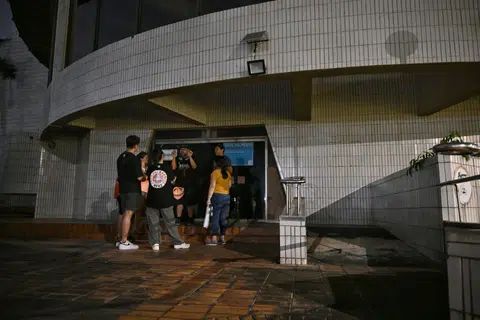
Likewise, Mr Ruzaimi said his team does not exploit real life tragedies in a disrespectful way. They also research and fact-check as much as possible to ensure that what they are presenting to the audience is accurate and not just relying on myths and exaggeration.
If a place they visit is still significant to nearby residents and communities, they will approach their storytelling more sensitively and remind their followers to do the same.
Weaving urban legends and ghostly tales with the past has also sparked debate. Some local historians have argued that Supernatural Confessions should focus on the rich history of Changi, instead of distracting people with superstitions.
Since the hospital closed nearly three decades ago, it has been fodder for ghost stories and used as a film location for TV shows such as crime and police procedurals.
Heritage author Jerome Lim, who has researched the hospital's past, told ST in 2021 that reports of paranormal sightings gained traction only after the hospital closed in 1997. He added that the site's history is often misunderstood.
For instance, the hospital building served as a POW camp only for a brief period of time, from February 1942 to May 1943 and historic records show no accounts of torture there, suggesting that gruesome and ghostly tales are unfounded.
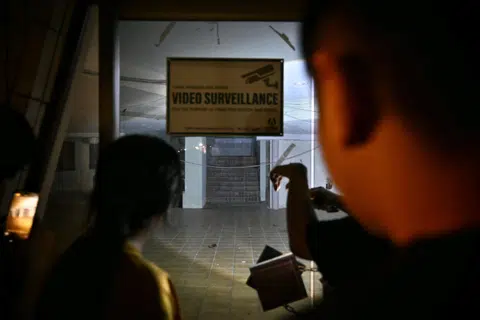
Professor Kevin Peter Blackburn, a historian teaching at the National Institute of Education, Nanyang Technological University, said adaptive reuse - in which the building facade and structure are kept, but the original use is changed - is often the outcome for historic buildings that are slated for conservation.
Professor Blackburn said good examples of adaptive reuse are Chijmes, which has won the Unesco Asia-Pacific Heritage Award, recognising exemplary conservation and adaptive reuse of buildings and sites in the region, and Dempsey Hill.
But Changi Hospital has not been gazetted or listed for conservation.
Ms Jane Iyer, the founder of Jane's Singapore Tours, recalled visiting the old Changi Hospital a few years ago with a Singapore Land Authority representative to learn more about local heritage buildings.
It was in a state of disrepair, she said, making adaptive reuse challenging. Yet, she believes demolishing the hospital and starting fresh is likely not what people want. "The site holds countless stories, making it extremely difficult for the authority or developers to determine how to proceed," she said.
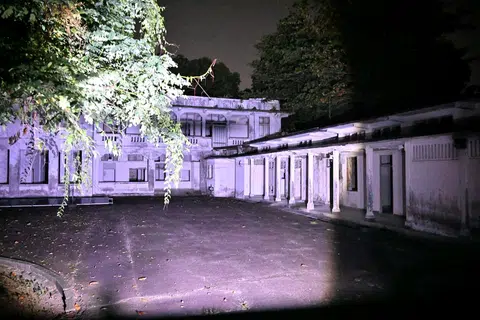
Mr Tay and Mr Lim agreed. They believed the slow development around the old Changi Hospital could simply mean the proposed projects are not financially viable or required drastic changes, such as widening roads, removing buildings and chopping down heritage trees, all of which would create uproar.
"I can see all the ghosts writing their petitions already," Mr Lim humorously noted.
"If this is not a place to look forward to, why not let it look backward," he added. "Maintaining its original charm and ghost stories so future generations can experience a slice of Singapore's history first-hand, beyond what textbooks and history lessons can offer."
Dr Agarwal encouraged tour managers to collaborate with local historians and cultural experts to ensure dark tours are conducted in an accurate and reflective manner.
She said it would be valuable to include real-life accounts of those who have been through the tragedies for stories to be told in respectful ways. Establishing guidelines for tour operators and reminding tour participants can also help minimise any disrespectful actions.
"In comparison to other neighbouring countries such as Cambodia or Vietnam, Singapore may not have the extensive dark tourism offerings," Dr Agarwal said. "However, it presents a unique blend of historical sites that reflect our short but colourful and tumultuous past."
In an era where history is easily paved over, dark and abandoned places can serve as portals to forgotten stories, inviting people to remember, reflect and reconnect with the past. After all, horror - in all its forms - is part of what makes us human.
Hazel Tang for The Straits Times